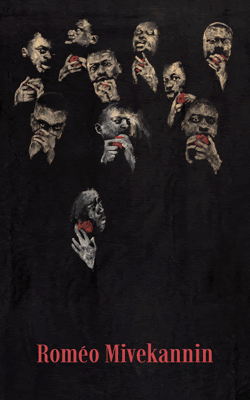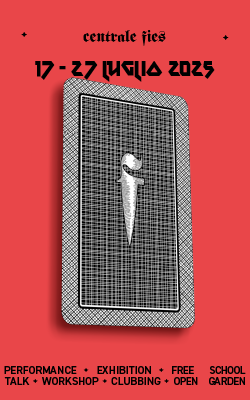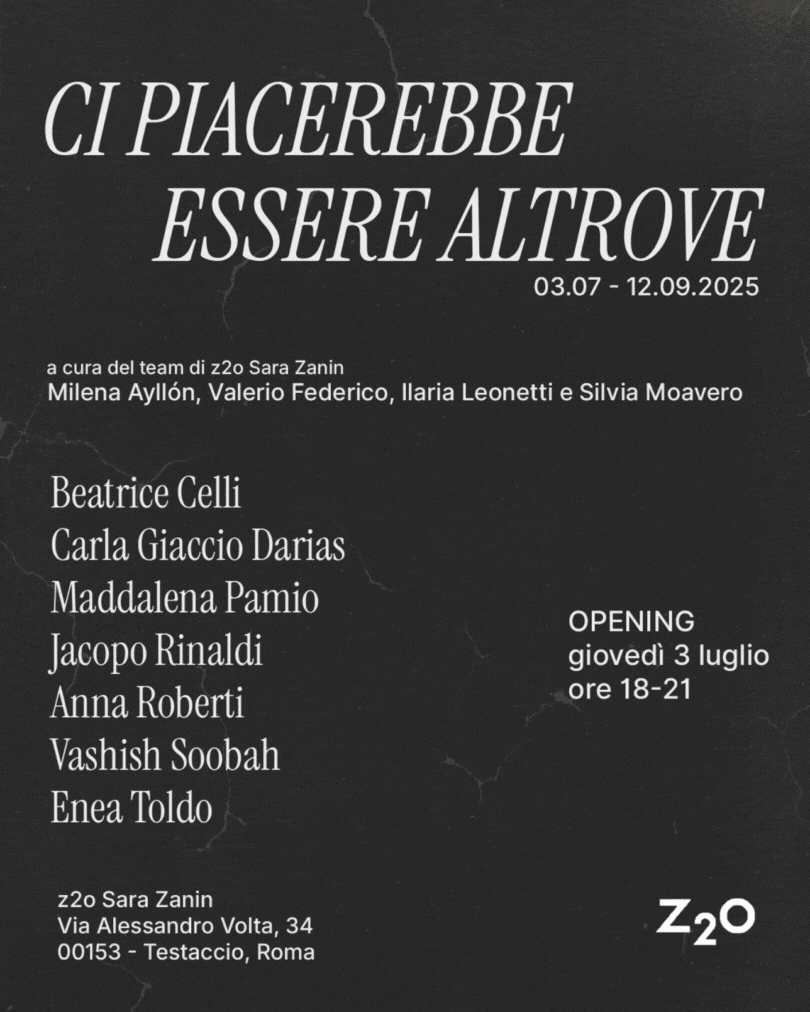[nemus_slider id=”44516″]
Scroll down for English text
Inaugura stasera alla GAM di Milano la mostra Don’t Shoot the Painter. Dipinti dalla UBS Art Collection, a cura di Francesco Bonami (dal 17 giugno al 4 ottobre). Sono state allestite negli spazi al piano terra del Museo opere di artisti contemporanei, dai piu? noti ed affermati ad altri giovani e meno conosciuti, provenienti dalla collezione della banca svizzera UBS.
Interessante l’allestimento, che propone delle gigantografie monocrome degli ambienti e delle opere proprie della Collezione della GAM presente al primo piano, disposte sulle pareti in modo da coprire interamente le pareti. Da riproduzioni fedeli a scala 1:1, ad ingrandimenti di particolari (Ebe di Canova), alle gote ingigantite di putti neoclassici si passa, dunque, proprio per sovrapposizione fisica, ad opere attuali, producendo, dunque, uno scarto cronologico, nonche? tematico, figurativo e prospettico.
Il tema dominante dell’esposizione e? la pittura, sulla quale, d’altra parte, riflette esplicitamente la celebre fotografia di Thomas Struth posta all’ingresso dell’esposizione, che ripropone un osservatore nel momento di relazione con l’opera esposta, andando a creare un discorso tautologico sull’arte, sui suoi luoghi espositivi e sulla sua fruizione. La curatela e? stata affidata a Francesco Bonami, che – come si nota d’acchito osservando la mostra – organizza le opere per affinita? stilistiche e formali, prima che concettuali e contenutistiche. Si passa dunque da una sala interessata al paesaggio “realistico” – tra cui la fotografia (1993) in bianco e nero di Andreas Gursky di un vastissimo e quasi romantico paesaggio crespo e roccioso -, ad un’altra in cui il mondo esterno e? rivisitato in chiave surreale, sospesa, simbolica: ecco allora l’olio su tela del duo russo Dubossarsky & Vinogradov, che proietta un normalissimo ambiente conviviale nelle acque cristalline di una piscina azzurrina, richiamando, utopicamente ed ironicamente, il linguaggio pubblicitario e commerciale degli arredi da esterno. C’e? poi la sala riservata ai ritratti e agli autoritratti, tra cui spiccano quello (1999) di Peter Stuyvesant ad opera Hiroshi Sugimoto, Tobacco versus Red Chief (1981-82) di Jean-Michel Basquiat, la serigrafia su tela nera (2014) di John Stezaker, il suggestivo e delicato (si vedano le luci) dipinto (2007) di fanciulle, sospese tra realta? e sogno, realizzato da Michae?l Borremans, la scomposizione di immagini (1992) di John Baldessari. Nella sala successiva la tematica di fondo appare piu? lieve e generica, a meno che non si voglia chiamarla “figurativismo”: troviamo, dunque, i due ragazzi in canoa sul lago Coleman rappresentati da Alex Katz (1974), le fette di torta e coppe di gelato dipinte da Wayne Thiebaud (1961), Vanish (1972) di Edward Ruscha, le tre figure su una zattera (riattualizzata da Ge?ricault) proposte da Sandro Chia. L’esposizione si conclude con l’arte stratta, disposta per accostamenti spesso puramente formali, come nelle pareti incentrate su figure circolari (Albumin, Human, Glycated, 1992, di Damien Hirst), o lineari (Frequency, 2006, di Nakhee Sung), oppure per semplice vicinanza fisica (Scard Border Drawing, 2007, di Alice Channeer).
Alla conferenza stampa di presentazione alla mostra e? intervenuto il curatore Francesco Bonami. “Prima di tutto devo dire che questa mostra e? stata curata a quattro mani con Emanuela Mazzonis, che si e? focalizzata sul progetto e lo ha portato a compimento come lo avevo immaginato ed, anzi, aggiungendo la sua visione. Abbiamo ricreato una quadreria come ne vediamo nei tanti dipinti di Sei e Settecento, in modo che valorizzasse lo spazio della GAM ed, insieme, aggiungesse uno spazio ulteriore alla mostra. Abbiamo potuto creare un dialogo tra le opere delle due collezioni. Abbiamo fatto una selezione di piu? di 100 lavori di 91 artisti, guardando alle opere e non tanto ai nomi. Si hanno quindi tantissime nazionalita? diverse e generazioni diverse in dialogo tra loro. I piu? famosi sono in perfetto equilibrio coi meno famosi. Si capisce che la pittura, tema di questa mostra, e? il filo rosso che rimane sempre presente nell’arte. Il titolo si rifa? all’idea di pittura come forza viva che altri linguaggi tendono a sopprimere, ma invece e? proprio quando il mondo dell’arte contemporanea diventa troppa caotico – come in una rissa da Salon – che il pittore, come il pianista dei film Western, comincia a suonare e fa evitare la sparatoria. La pittura, dunque, per molti versi porta ordine, è un punto saldo. La pittura resta un linguaggio forte e aggressivo. (…) Ho scelto di esporre anche delle immagini fotografiche perché gli artisti che utilizzano la fotografia hanno scelto di costruire delle immagini che hanno molta affinita? con la pittura. (…) UBS ha una collezione privata dalla lungimiranza abbastanza particolare, perche? compra le opere agli artisti all’inizio, quando non si puo? ancora capire quale sara? il loro futuro. Abbiamo scelto opere significative negli anni della loro realizzazione, che magari ora hanno perso il loro mordente.”
In merito all’allestimento, continua il curatore: “L’ho scelto per proporre opere sospese nello spazio: credo che l’arte sia fatta di contrasti e qui meglio di altri spazi le opere d’arte contemporanee cercano un dialogo con spazi precisi e connotati. Si capisce la differenza delle architetture, delle opere d’arte. Credo che una cosa si aggiunga e completi l’altra: lo spazio della GAM aggiunge di nuovo al contemporaneo e il contemporaneo alla Galleria”.
E’ intervenuta anche Paola Zatti, direttrice della GAM: “L’anno scorso con la collezione UBS abbiamo realizzato una mostra piu? piccola e piu? semplice dedicata alle opere su carta. Quest’anno l’appuntamento e? piu? complesso e delicato, rivolto alla pittura, con molte piu? opere. Mi piace questa mostra per come riesce a valorizzare la collezione UBS e la Galleria stessa, perche? l’allestimento e? un ‘museo nel museo’, riproducendo alcuni punti del museo e alcuni pezzi della collezione particolarmente significativi. Con UBS stiamo condividendo i nostri progetti in modo profondo e coordinato. Parliamo sempre di come portare avanti il Museo e di come renderlo sempre piu? attrattivo, differenziando il pubblico ed articolando l’offerta. Tanto e? da fare, ma abbiamo bene in mente i nostri obiettivi”.
Infine l’intervento dell’assessore alla cultura FiIlippo Del Corno: “Questo e? un modello innovativo di collaborazione tra soggetti pubblici e privati, non quantificabile solo economicamente, ma in base al contributo di idee. UBS, oltre ad essere una banca, e? un istituto che ha sviluppato un rapporto molto forte col mondo dell’espressione creativa. All’interno di questo percorso notiamo una reciproca valorizzazione: la Galleria valorizza la collezione UBS esponendola, la stessa e? ulteriore motivo di attrattivita? per chi visita la Galleria, che oltretutto e? gratuita. Fin dall’inizio abbiamo dichiarato questo come uno dei momenti centrali di ‘Expo in citta?’, programma che fa si? che la citta? sia sempre accompagnata da una proposta molto ricca nell’area metropolitana in questi mesi di Esposizione Universale. Si ha la volonta? di allestire un laboratorio di idee, che si manifesta nella caratteristica comune a tutte le attivita? espositive di ‘Expo in citta?’: l’ autorevolezza delle curatele”.

Don’t Shoot the Painter!
Text by Francesco Bonami
Shoot the Piano Player is a bittersweet and nerve-racking exploration of different kinds of loyalty: the kind a man owes his family, no matter how, no matter how bad that family is; the kind a man owes a woman; and, ultimately, the loyalty he owes to himself.
From the Amazon book description of David Goodis’ 1956 novel Shoot the Piano Player
In 1973 Elton John released the album Don’t Shoot Me I Am Only the Piano Player Painting is both a lonely business and a saving raft for the arts. No matter which kind of painting we are talking about. Painting is a matter of loyalty to the very idea of being an artist. Recurrently in my thirty plus years in the art world I have experienced and endured the returning spell of painting. “Painting is dead” or “Death to painting” is a refrain that different ideologies and conceptual attitudes have used over and over.
And yet Painting is alive and Painting is life. The misconception around painting is due to the fact that people misunderstand “painting” for a verb, while it is a noun like theatre, cinema, music, novel. Painting is dead as much as theatre is dead, or cinema is dead, or music and the novel are dead. In fact none of the above have never really died. They have been from time to time in dire straits, or weak, or slightly under the weather but never quite dead. When you see a canvas, not matter which shape or size, you know what you are in front of, a painting. Just as you know that you are in a movie theatre when you are inside a dark room with a white screen, or in a theatre when you see an empty stage or a closed curtain. When you open a book and you look inside you know what you are looking at. What then happens in those symbolic places is a different matter. Once your position as a viewer, a listener, or a reader is established, we can start to express judgments. You then have good theatre and bad theatre, good music and bad music, exciting movies or boring ones, and so on. Painting can be very bad, extremely bad. The worst crimes against the human eye, mind and taste have been perpetrated in the name of painting. I have myself seen hundreds if not thousands of paintings for which the authors and self proclaimed artists should have been sentenced to long prison terms with no bail. While it is impossible to kill painting, it is important to remember that painting is however a victim of many abuses, since its boundaries and its identity are very clear. In front of a chair cast in bronze or painted we need more information to be aware of it being a work of art. But in front of a canvas with a chair painted over, no matter how, we immediately know it is a painting of a chair. So anybody can paint a chair and rightfully say they did a painting. It’s indisputable.
Don’t shoot me I am only a painting. The painter is an important figure of saviour in the art world. It was painting that saved the art world from the doldrums of the crisis of the Seventies, when conceptual art was rampant and had killed both the pleasure of art and its market. In the Eighties, with all the excesses that any liberation movement brings along , painting invaded again the art scene and transformed what was a very limited market in a crazy bonanza, with absurd speculations and fast burning stars. Like the piano player in the saloon, that starts playing to calm down the mayhem around him, the painter is capable of bringing back some quiet or at least some serenity when the art world becomes entrapped in the mayhem of its obscure, even if essential and revealing, theories. The painter paints and the conceptual fundamentalists calm down, or at least stop shooting at each other. Ideas are beautiful but they need a support or a symbolic space where to become visible. Floating ideas are hard to grasp. It can be beautiful and mysterious to stroll around an empty museum with people chatting with you like in the work by German artist Tino Sehgal, but what is at first a challenging, provocative and revolutionary experience, can become an extremely dated and repetitive one. We can’t complain if the viewers, once experienced the verbal masterpiece, rejoin in front of a familiar canvas like the Demoiselles d’Avignon or even a much less prominent one. Painting tells stories and people like stories. But more than just stories, Tino Sehgal also tells you some kind of story, people like to hear stories in an archetypal format. A movie on a screen, a novel in a book, music from an instrument, or a singer, or people moving and talking on stage. In a museum the story they are expecting to hear has to be usually inside the frame of a canvas. That’s why at the end of the day paintings and painters are the most popular within art history. When I talk about painting I don’t just limit myself, clearly, to the idea of oil or tempera on canvas. I talk about a symbolic format. The school of German photographers of the Nineties, Struth, Gursky, Ruff and all the others that followed, understood that photography would acquire a different status if it would compete with the scale of heroic painting. Not only. Photography could compete with painting if it was conceived and constructed as a painting, building its own narrative and story within a given format, not just enlarging and reducing a taken image. The success of those artists was the success of painters, albeit different ones. Painting that becomes like photography or photography that turns into painting have a fascinating edge that captivates the attention and the thoughts of the viewers. In thinking about an exhibition on the idea of painting we have also reflected on how to transform the very experience of the show into a painting. We decided to hang the paintings on top of other paintings. Using as background images of the existing space of the museum with its own collection. The result is like watching floating paintings, a very particular and surreal “quadreria”, where the works abandon their physicality and become what they are: symbols containing images, stories and ideas. Don’t shoot the painter! A warning and a plea, for two simple reasons. One: if you shoot one painter you will have another one coming up right away, and another one, and another one, and another one. Two: if you shoot the painter you kill in one shot a symbol, an image, a story and an idea. You shoot basically what art is about and what we as humans are all about.











